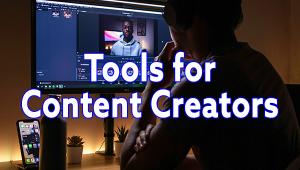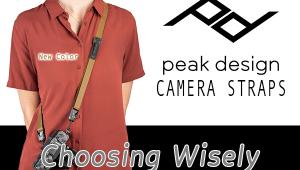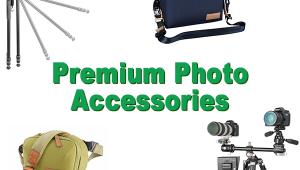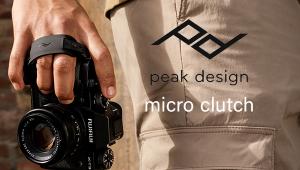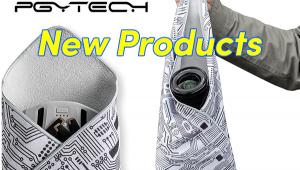A Look at the Intriguing New Palette Kit Modular Control Interface for Image Editing Software

The concept isn’t new. Gamers have been using dedicated yokes, rudder pedals and throttles with Flight Simulator and aerial combat games for at least three decades. Even Super Mario racing games can be purchased with steering wheel controllers. But the Palette Kit from Canadian firm Palette is the most comprehensive set of alternative input hardware interfaces for Lightroom and Photoshop ever.
This is not a review. I have not used the Palette Kit, so I cannot tell you whether or not it performs as advertised. With that disclaimer as a backdrop, what I can do is describe what it is and speculate whether or not I might like using it. Form your own conclusions after reading this and anything else you can find, starting here on their website.
It all begins with the Core, a 45mm (1.8 inch) square tile with an OLED screen that plugs into your PC or Mac (Win 7 or iOS 10.9 or higher) via USB. To the Core you can magnetically attach Buttons, Sliders and Dials. All but the Slider, which is 45mm by 90mm, are the same size as the Core.
As you can understand from their names, each tile can be used to control the features and functions of software in a particular way. At this moment, the Palette can be used to control Adobe Photoshop, Lightroom, Illustrator and After Effects; under beta: InDesign CC and Premiere Pro. There are also apps that ape keyboard input and joystick control.
To get an idea of how Palette works, check out this video of photographer Ted Belton using the device to edit images:
I asked Ryan Van Stralen, community and marketing manager at Palette, about compatibility with non-Adobe products. “Palette dials and buttons can be assigned any keyboard shortcut, so in that respect will work with virtually any software,” he replied. “For deeper integrations, we're working on additional partnerships currently and have plans to release developer tools so that other software can be supported by third parties.”
The Starter kit comes with one Core, two Buttons and one each Dial and Slider, enough to get your hands wet, for the introductory price of $199. Currently the price includes a 20% discount offer on Adobe’s Creative Cloud Photography plan. Other Kits are available, and the individual controller tiles can be purchased separately. To expand à la carte, add another Dial or Slider for $49 or a Button for $29. Palette is accepting preorders which will be shipping in November.
Here is a passage from their press release: “At Palette, we’re creating a new category of hardware and software offering flexibility of both form and function because we recognize that everyone works differently,” says Calvin Chu, founder and CEO. “We’re excited to see people use Palette’s hands-on controls to make interaction with your computer more natural and enjoyable.”

So far, so good, no? While I applaud their pluck, I see three major obstacles to their success. I could be completely wrong or perhaps with this input they’ll engineer solutions to what I identify as potential problems. It’s still very early in the game—that’s in their favor—and I hope they prove me wrong.
First obstacle is learning—or rather, unlearning and relearning. Many heavy users of Photoshop have mastered the keyboard shortcuts and perform them without thinking. They are resistant to changing their habits, even in favor of something better. This is one of the reasons Photoshop clones have failed to garner significant market share—they don’t work exactly the same way. Unless I’m missing something, the Palette requires some relearning. In fact, the easy ability to change input configurations could be a minus instead of a plus.
The second issue is the price. Photoshop owners recoil at the thought of spending $10 monthly for the photographer’s version of Creative Cloud—a purchase that in reality could be considered the deal of the decade. I suspect that few will be willing to drop $200 to experiment with an alternative input setup. In any case, I can’t imagine many people buying it without trying it first, and trying it means learning it and that takes us back to obstacle number one.

Third problem, it’s not a graphic tablet. Today you can buy an 8.8 x 5.5 inch Wacom Intuos Pro Professional Pen & Touch Tablet—with kit for wireless operation—for $349. The larger 12.8 x 8.0 inch model runs $499. In addition to providing a pressure sensitive tablet, these input devices feature six customizable ExpressKeys and Touch Ring that allow you to access shortcuts and improve workflow.
I realize that the Palette is not trying to be a tablet, but it’s in the same price range. Given the choice between a set of Buttons, Sliders and Dials and a pressure sensitive Wacom tablet that accepts pen input and is backed by a company that has an estimated 90.5% market share in the US (85% globally) and celebrated an astounding production milestone last year: manufacture of their unique digital pen components reached 100 million units as of April 16th, 2014, I think customers will choose the tablet.
—Jon Sienkiewicz
- Log in or register to post comments

